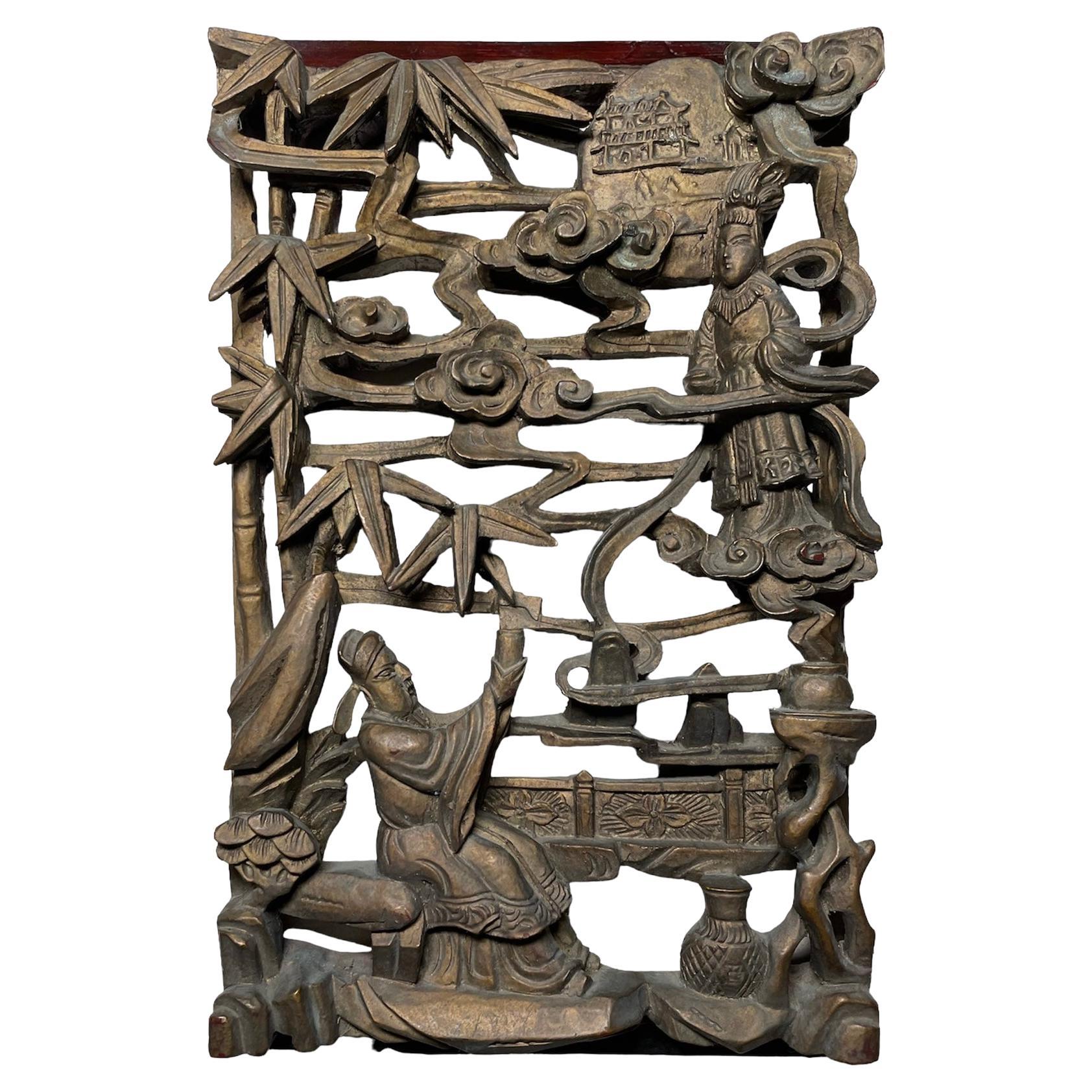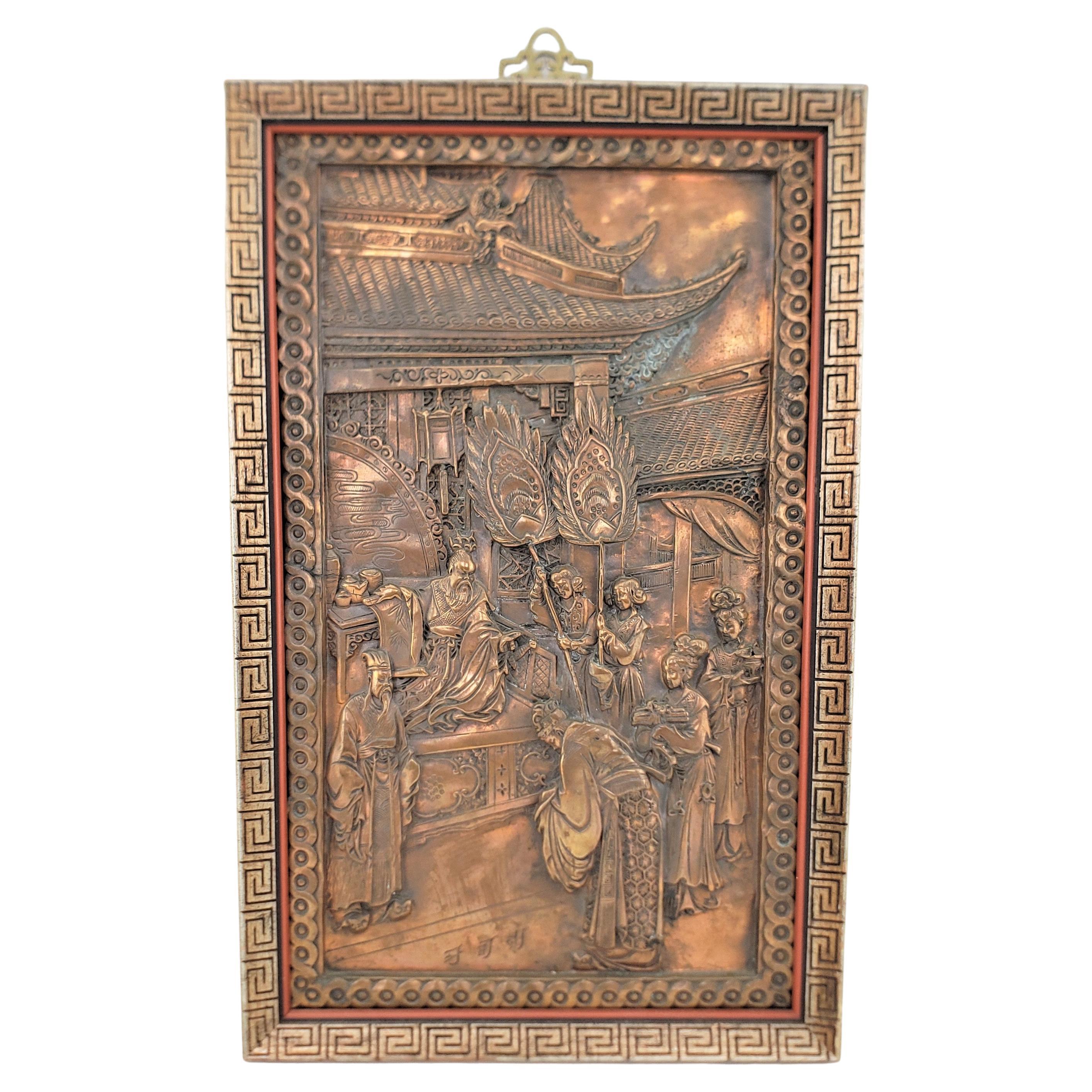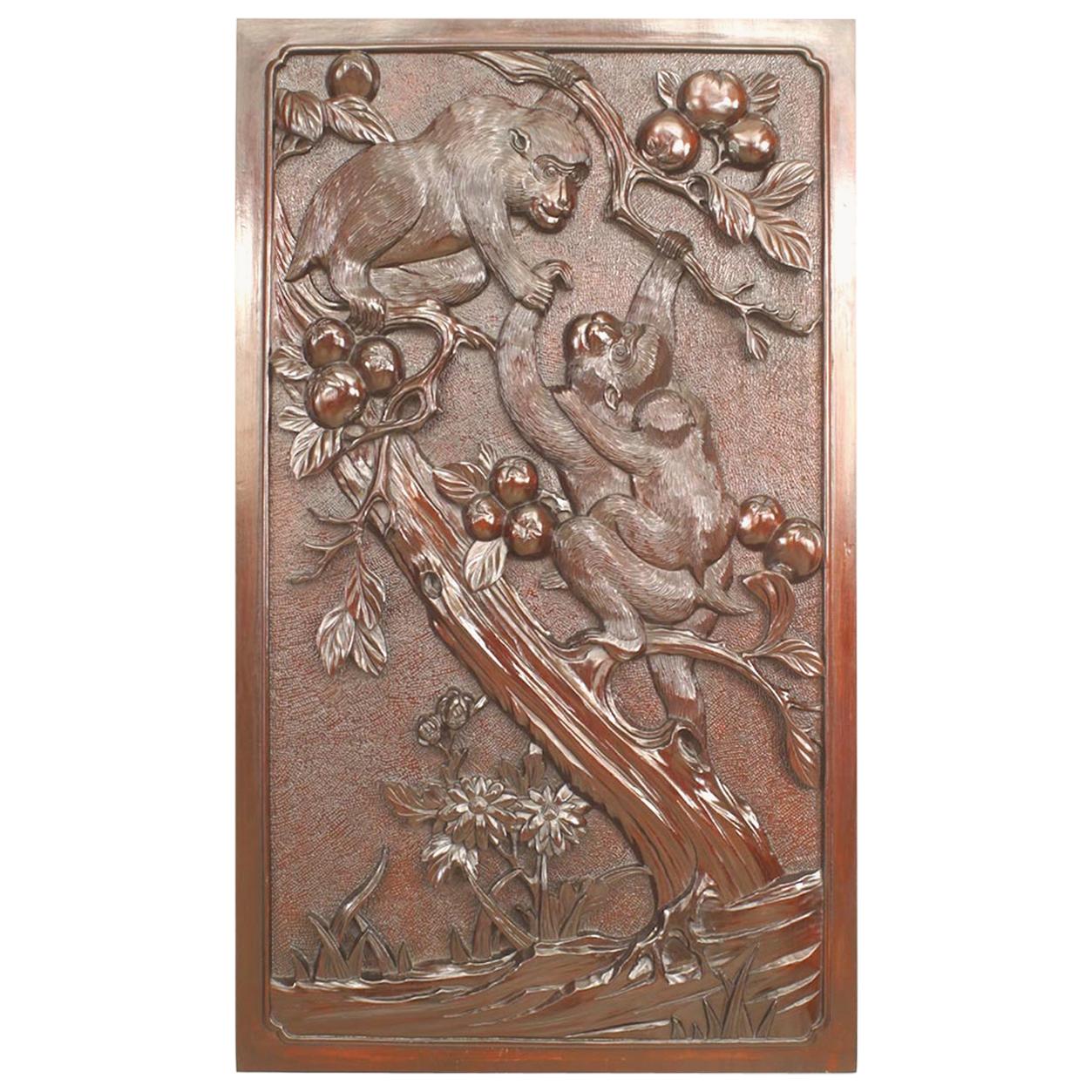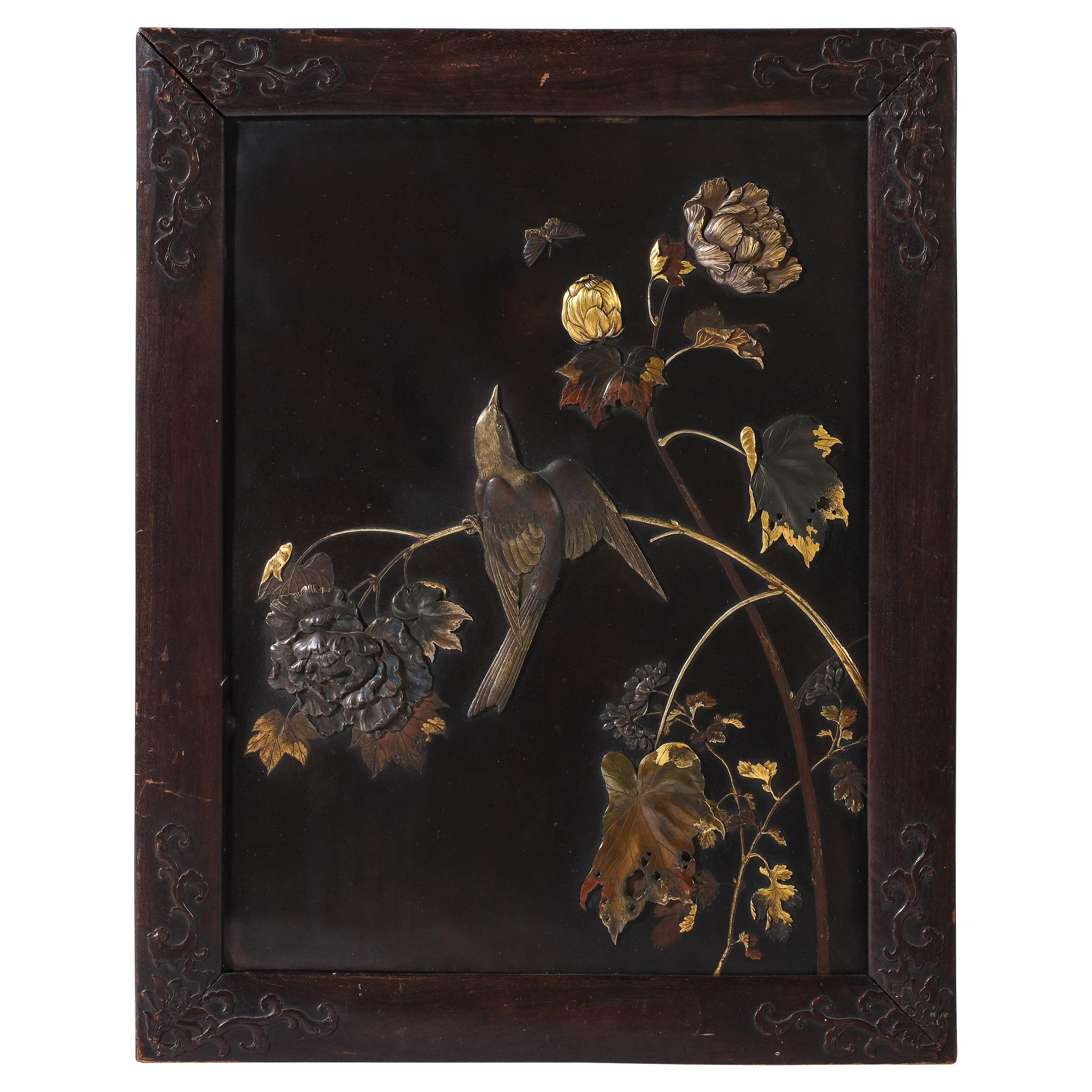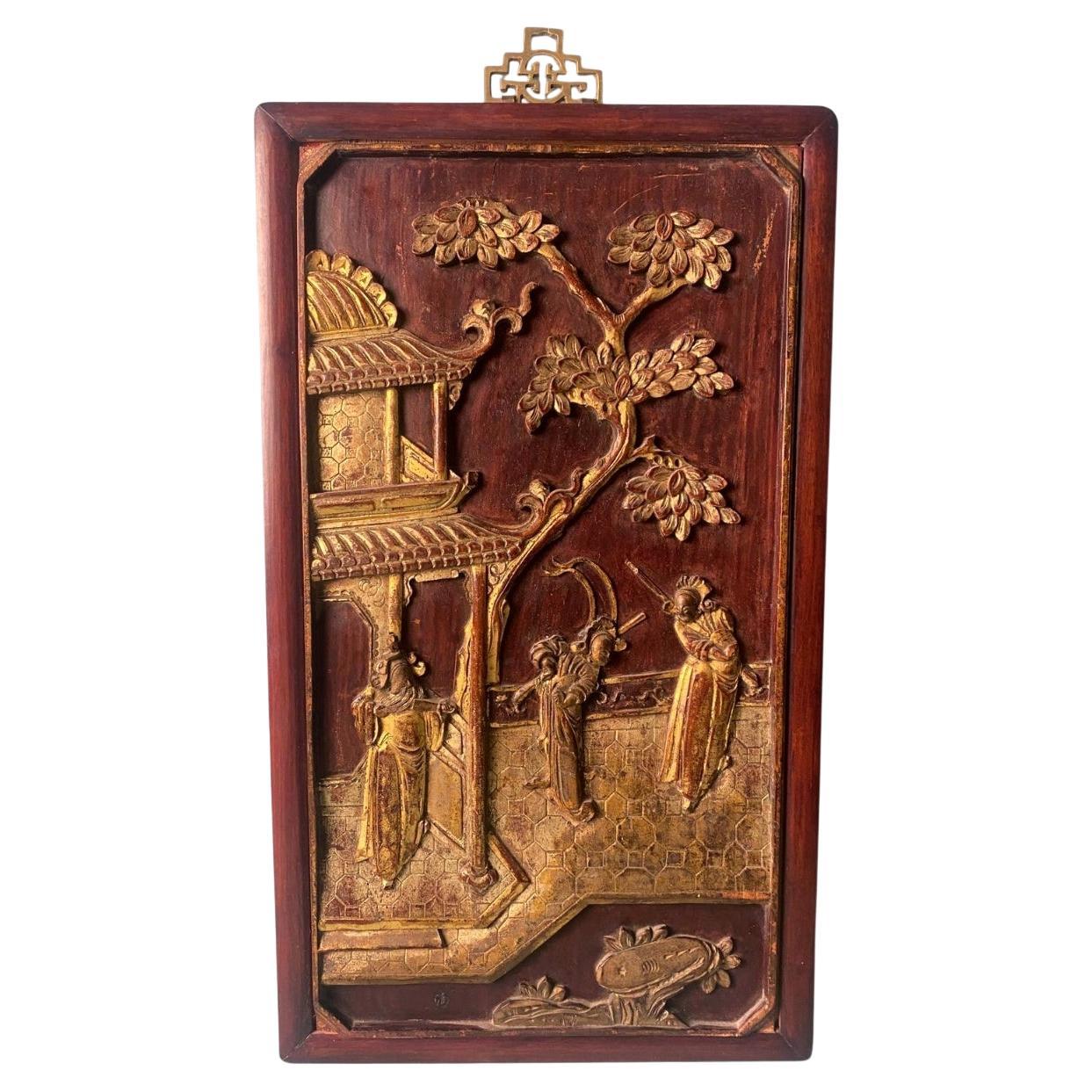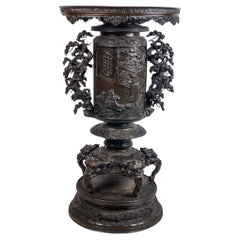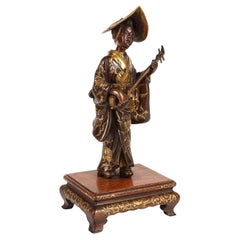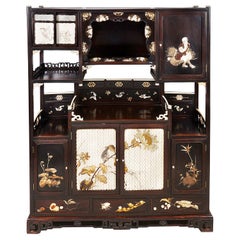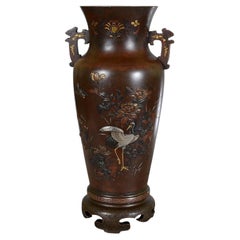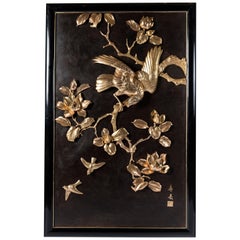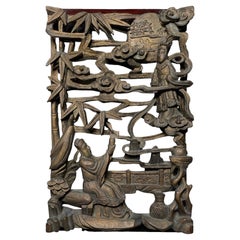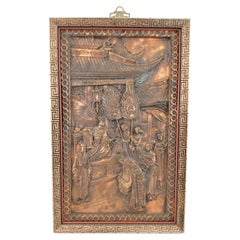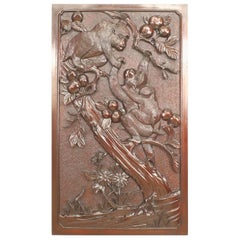Items Similar to Meiji period bronze plaque.
Want more images or videos?
Request additional images or videos from the seller
1 of 10
Meiji period bronze plaque.
$23,813.91
£17,500
€20,559.59
CA$32,716.26
A$36,524.63
CHF 19,138.36
MX$447,097.30
NOK 243,057.31
SEK 229,172.18
DKK 153,438.36
About the Item
A fine quality late 19th Century (Meiji period 1868-1912) patinated and gilded bronze plaque depicting four men looking into the sky, two under a Palm tree, the other two standing next to a Tiger and holding a smoking vessel above his head. A dragon and god like figure appear out of the clouds of smoke. Set in a hardwood frame.
Batch 75 57687 YNKZZ
- Dimensions:Height: 27.17 in (69 cm)Width: 22.45 in (57 cm)Depth: 3.15 in (8 cm)
- Materials and Techniques:
- Place of Origin:
- Period:
- Date of Manufacture:1890
- Condition:Wear consistent with age and use.
- Seller Location:Brighton, GB
- Reference Number:Seller: SKU000020341stDibs: LU1227237566342
About the Seller
5.0
Platinum Seller
Premium sellers with a 4.7+ rating and 24-hour response times
1stDibs seller since 2015
494 sales on 1stDibs
Typical response time: 1 hour
Associations
LAPADA - The Association of Arts & Antiques Dealers
- ShippingRetrieving quote...Shipping from: Brighton, United Kingdom
- Return Policy
Authenticity Guarantee
In the unlikely event there’s an issue with an item’s authenticity, contact us within 1 year for a full refund. DetailsMoney-Back Guarantee
If your item is not as described, is damaged in transit, or does not arrive, contact us within 7 days for a full refund. Details24-Hour Cancellation
You have a 24-hour grace period in which to reconsider your purchase, with no questions asked.Vetted Professional Sellers
Our world-class sellers must adhere to strict standards for service and quality, maintaining the integrity of our listings.Price-Match Guarantee
If you find that a seller listed the same item for a lower price elsewhere, we’ll match it.Trusted Global Delivery
Our best-in-class carrier network provides specialized shipping options worldwide, including custom delivery.More From This Seller
View AllJapanese Meiji period bronze censor.
Located in Brighton, Sussex
A very impressive and decorative Japanese Meiji period (1868-1912) bronze Censor, having wonderful stylised tree like handles either side, inset panels depicting two Geisha...
Category
Antique Late 19th Century Japanese Planters, Cachepots and Jardinières
Materials
Bronze
Japanese Meiji Period, Miyao Bronze Statue of a Musician
By Eisuke Miyao 1
Located in Brighton, Sussex
A fine quality Meiji period (1868-1912) Miyao bronze statue of a female muscian, having wonderful gilded high lights and mounted on a hardwood stand. Sign...
Category
Antique 19th Century Japanese Sculptures and Carvings
Materials
Bronze
Rare and Important Japanese Meiji Period Shadona, circa 1890
Located in Brighton, Sussex
A Japanese hardwood shodana with inlaid and lacquer decoration, Meiji Period 1868-1912, by Shoso Kosen, bearing two character signature and red seal, with various shelves, cupboards,...
Category
Antique Late 19th Century Japanese Furniture
Materials
Hardwood, Lacquer
Japanese mixed metal bronze vase, 43cm high
Located in Brighton, Sussex
A fine quality late 19th Century, Meiji period Japanese bronze two handled vase with wonderful mixed metal relief decoration, depicting a Crane and birds flying among exotic flowers ...
Category
Antique Late 19th Century Japanese Vases
Materials
Bronze
Meiji Period Japanese Bronze Enamel Vase
Located in Brighton, Sussex
A very impressive Japanese bronze and cloisonne enamel vase having raised decoration depicting a carp in the river, with a deer under a tree.
Category
Antique Late 19th Century Japanese Meiji Vases
Materials
Bronze
Large Japanese Meiji Period Bronze over Lay Vase
Located in Brighton, Sussex
A wonderful Japanese Meiji period (1868-1912) Bronze overlay vase. Having exquisite and amusing scenes in relief, patinated and overlay of a Dog of Foo, a Frog fishing in a Lotus lea...
Category
Antique Late 19th Century Japanese Japonisme Vases
Materials
Bronze
You May Also Like
Gilt and Patinated Bronze Plaque, Japan, circa 1900
Located in Buenos Aires, Buenos Aires
Gilt and patinated bronze plaque. Japan, circa 1900.
Category
Antique Early 1900s Japanese Meiji Decorative Art
Materials
Bronze
Chinese Hand Carved and Lacquered Gilt Panel
Located in Guaynabo, PR
This is a small rectangular hand carved and lacquered panel. It depicts a scene where a Chinese man is seated and holding a cup while a Chinese woman is observing from the top. The w...
Category
Early 20th Century Chinese Chinese Export Sculptures and Carvings
Materials
Wood
$280 Sale Price
20% Off
Vintage Chinese Repouse Framed Copper Panel of a Ceremonial Vignette
Located in Hamilton, Ontario
This vintage framed copper repouse panel appears to be signed by an unknown artist and presumed to have originated from China, dating to approximately 19...
Category
Mid-20th Century Chinese Chinese Export Metalwork
Materials
Copper
Asian Chinese Style '19th Century' Carved Wall Plaque
Located in Queens, NY
Asian Chinese style (19th century) carved wall plaque with monkeys playing in trees with fruit (finished on back with bamboo trees).
Category
Antique 19th Century Chinese Sculptures and Carvings
Materials
Wood
Japanese Meji Period Mixed Metal Plaque Attb. to Suzuki Chokichi 'Kaka'
Located in New York, NY
A large, fine quality, and world class Japanese Meiji period mixed metal plaque with Shakudo-inlay, silver-inlay, gold-inlay, copper-inlay, and patina, attributed to the famous Suzuki Chokichi...
Category
Antique 19th Century Japanese Meiji Metalwork
Materials
Metal, Gold, Silver, Copper
$34,080 Sale Price
20% Off
Qing Dynasty Exquisite Chinese Wooden Panel With Raised Figures Gold Leaf (n.2)
Located in Prato, Tuscany
We kindly invite you to read the entire description carefully, as we aim to provide detailed technical and historical information to ensure the authenticity of our items.
This extrao...
Category
Antique Late 19th Century Chinese Chinoiserie Sculptures and Carvings
Materials
Wood

